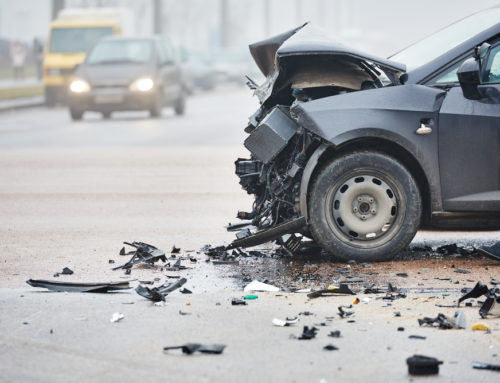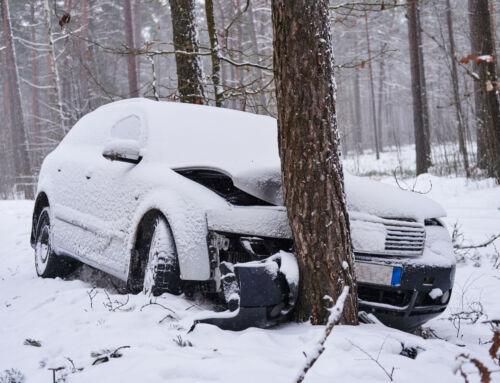Determining negligence or liability in a car accident can be a challenging process. But proving fault is necessary when trying to recover damages. And it’s not something you want to leave up to the defendant’s insurance company to figure out. A Lafayette IN car accident lawyer can make sure that you gather the right evidence to make sure you can prove that the defendant has the majority of fault for the accident.
Indiana’s car accident laws set a variety of rules that will impact whether you’re entitled to compensation for your injuries. Below, we explain how to determine fault in a car accident in Indiana and outlines what you should do after a serious car crash. To learn more, contact Hall-Justice Law Firm today.
What Are Indiana Negligence Laws?
Indiana’s motor vehicle negligence laws focus on liability or fault. In order to recover damages or compensation for your injuries, you must show that the other driver is more at fault for causing the accident. While car accidents can involve intentional acts, most are based on a theory of negligence.
To prove that a driver was negligent, you must show:
- They owed you a duty of care (such as a duty to drive safely and attentively or to yield the right of way)
- They violated this duty of care
- The violation caused your injuries
- You suffered damages (such as lost income, medical expenses, and emotional distress) due to your injuries
While some cases are relatively clear-cut, many car accident victims struggle to put these pieces together.
A skilled Indiana injury lawyer can help you understand your legal rights and options. At Hall-Justice Law Firm, we use our experience and personal approach to learn about our clients’ claims, carefully investigate them, and guide them through the appropriate legal analysis. To request a free, no-risk consultation, contact our office today.
How to Establish Fault in Common Types of Indiana Car Accidents
While every car crash is different and deserves its own personalized analysis, there are some basic rules that Indiana’s auto liability laws follow. Sometimes, the nature of the collision can impact liability.
Rear-End Collisions
In Indiana (and most states), you’re almost always at fault if you rear-end someone. When you’re driving you must give yourself enough stopping distance and stay aware of your surroundings. If you crash into another driver’s rear end, the authorities will assume that you violated these duties — regardless of why the other driver suddenly came to a stop.
Drunk Driving
In most cases, a drunk driver will be considered at fault for an accident. However, this analysis isn’t always as clear-cut and simple as a rear-end collision. Your Indiana car accident attorney may present evidence that the drivers’ intoxication caused the wreck, looking at their blood-alcohol levels, substance use, and other factors that might impact their ability to operate a vehicle safely.
In the most serious drunk driving cases, a skilled lawyer may show that the drunk driver’s conduct rose to the level of gross negligence or intentional conduct — and demand punitive damages. Punitive damages do not compensate victims for their economic or emotional losses. Instead, they aim to punish the reckless driver for the serious disregard for others’ safety. To learn more about Indiana’s drunk driving liability laws and punitive damages, contact Hall-Justice Law Firm.
Failure to Yield
Most car accidents occur at intersections and may involve a failure to yield. This can occur when someone turns left in front of another vehicle, ignores a traffic device, or is distracted by a smartphone or other device. Unfortunately, these crashes are more complicated and sometimes turn into a “he said, she said” situation.
An experienced Indiana car accident lawyer will do more than interview witnesses. Depending on the circumstances surrounding the crash, they might also have access to traffic or dash camera footage, electronic data from a commercial vehicle’s tracking system, and other information.
What If Multiple People Are at Fault?
When you’re figuring out how to determine fault in a car accident, some of the most complicated claims involve multiple negligent drivers. This is more common than you might think. Suppose one driver is speeding and enters an intersection. Another driver in the intersection is distracted and fails to come to a complete stop at a stop sign. When they collide, who is to blame?
Indiana applies a rule of comparative negligence. As long as you are less than 51% responsible for the crash, you can recover compensation for your injuries. While this is a relatively simple analysis when your actions were minor, insurance companies often try to shift blame and avoid paying victims’ claims. If the insurance company is trying to reject or reduce your claim because of a minor mistake, contact an injury lawyer at Hall-Justice Law Firm immediately. We’ll help you understand your legal options and suggest some practical next steps.
Learn More About How to Determine Fault in a Car Accident
Most accident victims are unsure how to determine fault in a car accident. Don’t make mistakes that cost you compensation. It’s in your best interest to consult with one of our experienced Lafayette IN car accident lawyers. At Hall-Justice Law Firm, we can advise you of your options and guide you through the accident claims process. Contact us today.





